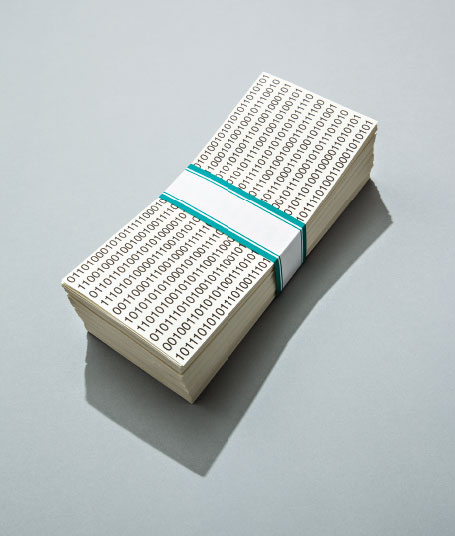Ripple Labs
It’s a moneymaking scheme a child might suggest: get rich by inventing a new form of money. All the same, Chris Larsen, CEO and founder of Ripple Labs, is getting other people to play along with him. And they aren’t just Silicon Valley investors. People are using Ripple’s digital cash to exchange traditional paper currencies.

Ripple’s currency is modeled on the digital cash Bitcoin, which has boomed and sometimes busted in value over recent years (see “Show Me the Bitcoins”), and both use similar cryptography to prevent fraud. But while Bitcoin is designed to be used like regular currency to buy things, Ripple’s cash, known as XRP, is intended to make many foreign exchange transfers faster and less expensive.
Traditionally, a person who has Burmese kyats, for example, and needs to send money to someone in U.S. dollars has had to wait days for the transaction to clear, incurring sizable fees in the process. That’s because international money transfer systems rely on centralized, decades-old systems to verify that payments are valid. But banks—or new, low-cost startup services—could use Ripple’s technology to sidestep those systems. They would convert the payer’s kyats into XRPs and then use the Ripple protocol to automatically find a partner willing to convert those XRPs into dollars, completing the deal almost instantly. A financial company might choose to hold a stash of XRPs of its own to make such transfers easier.
Larsen hopes this technology will stimulate international commerce and make it cheaper for expatriates to send money back to their families in poor countries. (The World Bank estimates that in 2012, almost 12 percent of the $60 billion in such remittances to African countries was swallowed by transaction fees.) Indeed, Ripple reports that transfers from Europe to China already make up a significant portion of the roughly $20 million processed using its technology every month.
The algorithms underlying Ripple’s technology dictate that there will be no more than 100 billion XRPs to go around. Though the company is giving away many of them to get the system off the ground, it has allocated one-fourth of the hoard to itself and is relying on the XRP’s increasing value as its only source of income. Between the freebies and the ones Ripple has sold to companies and investors who believe the currency will gain value, there are 7.5 billion XRPs in circulation. That’s enough to make Ripple Labs’ cash flow positive—and to show that inventing and selling your own currency really can work.
Keep Reading
Most Popular
Large language models can do jaw-dropping things. But nobody knows exactly why.
And that's a problem. Figuring it out is one of the biggest scientific puzzles of our time and a crucial step towards controlling more powerful future models.
How scientists traced a mysterious covid case back to six toilets
When wastewater surveillance turns into a hunt for a single infected individual, the ethics get tricky.
The problem with plug-in hybrids? Their drivers.
Plug-in hybrids are often sold as a transition to EVs, but new data from Europe shows we’re still underestimating the emissions they produce.
Stay connected
Get the latest updates from
MIT Technology Review
Discover special offers, top stories, upcoming events, and more.